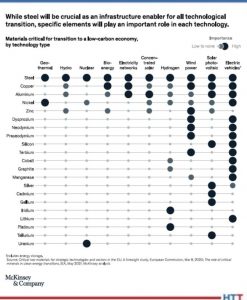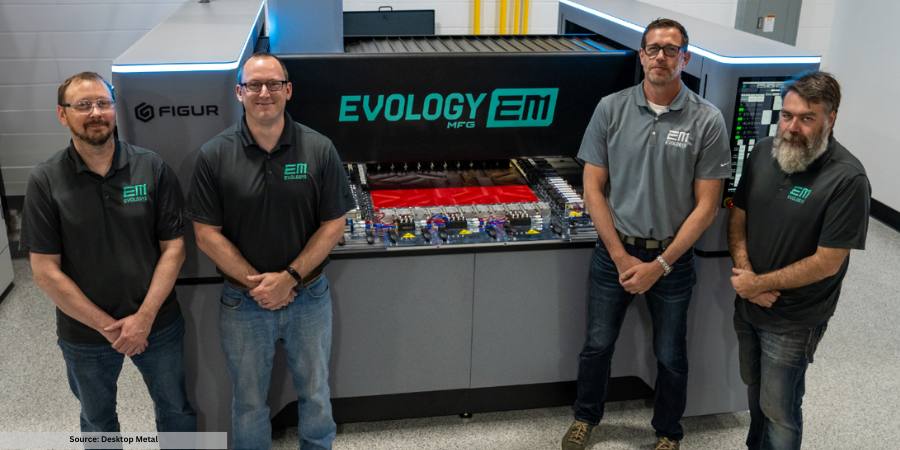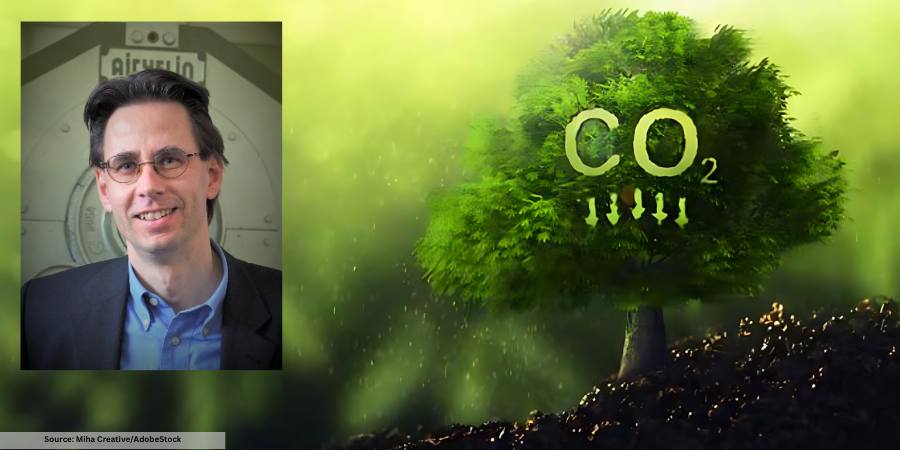![]() The American steel industry is the cleanest of the leading steel industries in the world. Of the major steel-producing countries, the U.S. has the lowest CO2 emissions per ton of steel produced. By contrast, Chinese steel production creates carbon emissions that are nearly twice that of the U.S. per ton of steel produced. The global steel industry contributes 8% of total world greenhouse gas (GHG) emissions, whereas the U.S. steel industry only accounts for 1–2% of total U.S. GHG emissions.
The American steel industry is the cleanest of the leading steel industries in the world. Of the major steel-producing countries, the U.S. has the lowest CO2 emissions per ton of steel produced. By contrast, Chinese steel production creates carbon emissions that are nearly twice that of the U.S. per ton of steel produced. The global steel industry contributes 8% of total world greenhouse gas (GHG) emissions, whereas the U.S. steel industry only accounts for 1–2% of total U.S. GHG emissions.
Read why Kevin Dempsey of American Iron and Steel Institute thinks that America is doing so well with decarbonization.
This article first appeared in Heat Treat Today’s November 2022 Annual Vacuum print edition.

President and CEO
American Iron and Steel Institute
Source: steel.org
There are several reasons for the American steel industry’s leadership in decarbonization. A key factor is that the American steel industry has adopted electric arc furnace (EAF) technology at a much more accelerated rate than the global industry. Nearly 71% of the steel produced in the U.S. in 2020 was from EAFs, compared to only 26% globally.
In addition, the American steel industry operates blast furnaces that are among the most carbon efficient in the world. Integrated steel mills in the U.S. are almost entirely fed by domestically sourced iron ore pellets compared to CO2 -intensive sintered ore used in China and elsewhere. This results in significantly lower emissions of CO2, as well as lower emissions of NOx, SO2, and particulate matter.
Also, the emissions factors associated with the energy mix used for steelmaking in the United States are lower than in other steel-producing locations in the world, with much more reliance on natural gas and renewable energy. This cleaner energy mix helps produce steel with the lowest CO2 emissions. The American steel industry is continuing to invest in clean energy to provide the electricity needed to run our mills — a number of steel producers in the U.S. have announced several projects that employ renewable energy to supply all or most of specific facilities’ energy requirements.
The steel industry in the U.S. also continues to make other key investments to further decrease its carbon emissions and advance its leadership position on sustainability. For example, American steelmakers have made investments to increase the use of direct reduced iron (DRI) and hot briquetted iron (HBI), which can lower emissions for both integrated blast furnace-basic oxygen furnace steel mills and EAF steel mills. Additionally, new DRI and HBI facilities are being designed and have recently been built to be hydrogen-ready once clean hydrogen is available on an industrial scale and commercially viable.
 Steel is a critical component in the continued development of all clean energy technologies to reduce America’s carbon footprint. According to a recent study by McKinsey & Co1, steel is the only material critical to all low-carbon technologies. Wind, solar, and tidal renewable energy systems, zero emission electric vehicles, electric grid transmission, hydrogen production, and carbon capture systems all highly depend on steel. For example, steel comprises over 70% of the weight of a typical wind turbine. Grain oriented electrical steel (GOES) is a critical and irreplaceable material used in the production of power and distribution transformers that will be necessary for the greening and modernization of the domestic electric grid. American non oriented electrical steel (NOES) is used for electric motors, including those that will power the growing electric vehicle market.
Steel is a critical component in the continued development of all clean energy technologies to reduce America’s carbon footprint. According to a recent study by McKinsey & Co1, steel is the only material critical to all low-carbon technologies. Wind, solar, and tidal renewable energy systems, zero emission electric vehicles, electric grid transmission, hydrogen production, and carbon capture systems all highly depend on steel. For example, steel comprises over 70% of the weight of a typical wind turbine. Grain oriented electrical steel (GOES) is a critical and irreplaceable material used in the production of power and distribution transformers that will be necessary for the greening and modernization of the domestic electric grid. American non oriented electrical steel (NOES) is used for electric motors, including those that will power the growing electric vehicle market.
The American steel industry and its construction partners have also proactively and voluntarily published verified Environmental Product Declarations, which report the carbon footprint and other potential environmental impacts for nearly every steel construction product available in the marketplace today. Furthermore, when steel construction products have outlived their current intended use, they can be recycled into new steel to be used for any variety of new products. Today’s steel beam can become tomorrow’s refrigerator, soup can, or car door.
Sustainable steelmaking is the American steel industry’s number one commitment — for our customers and all Americans. Our entire industry is continuing to make key investments and innovations to further decrease carbon emissions and advance our leadership position on sustainability.
About the Author: Kevin Dempsey is the president and chief executive officer of the American Iron and Steel Institute, a leading advocacy group representing electric arc furnace and integrated American steel producers. He previously served as senior vice president of public policy and general counsel to the Institute, during which AISI achieved landmark policy successes on trade, tax, and infrastructure, and successfully showcased the steel industry’s sustainability accomplishments and steel innovations in the automotive and construction markets.
For more information: www.steel.org
References:
[1] Marcelo Azevedo, Magdalena Baczynska, Patricia Bingoto, Greg Callaway, Ken Hoffman, “The raw materials challenge: How the metals and mining sector will be at the core of enabling the energy transition,” McKinsey & Company, January 10, 2022, www.mckinsey.com/industries/ metals-and-mining/our-insights/the-raw-materials-challenge-how-the- metals-and-mining-sector-will-be- at-the-core-of-enabling-the-energy- transition.





